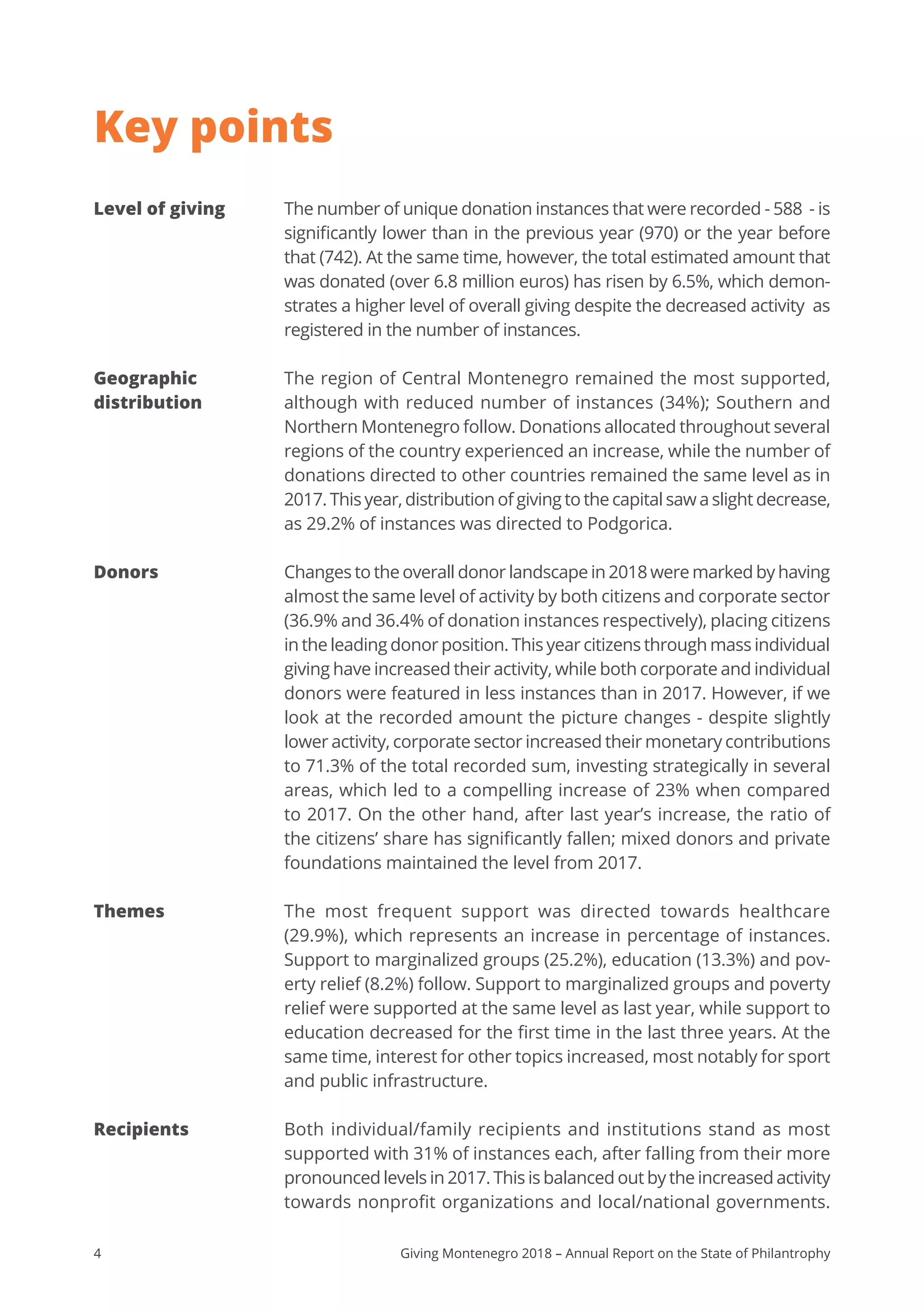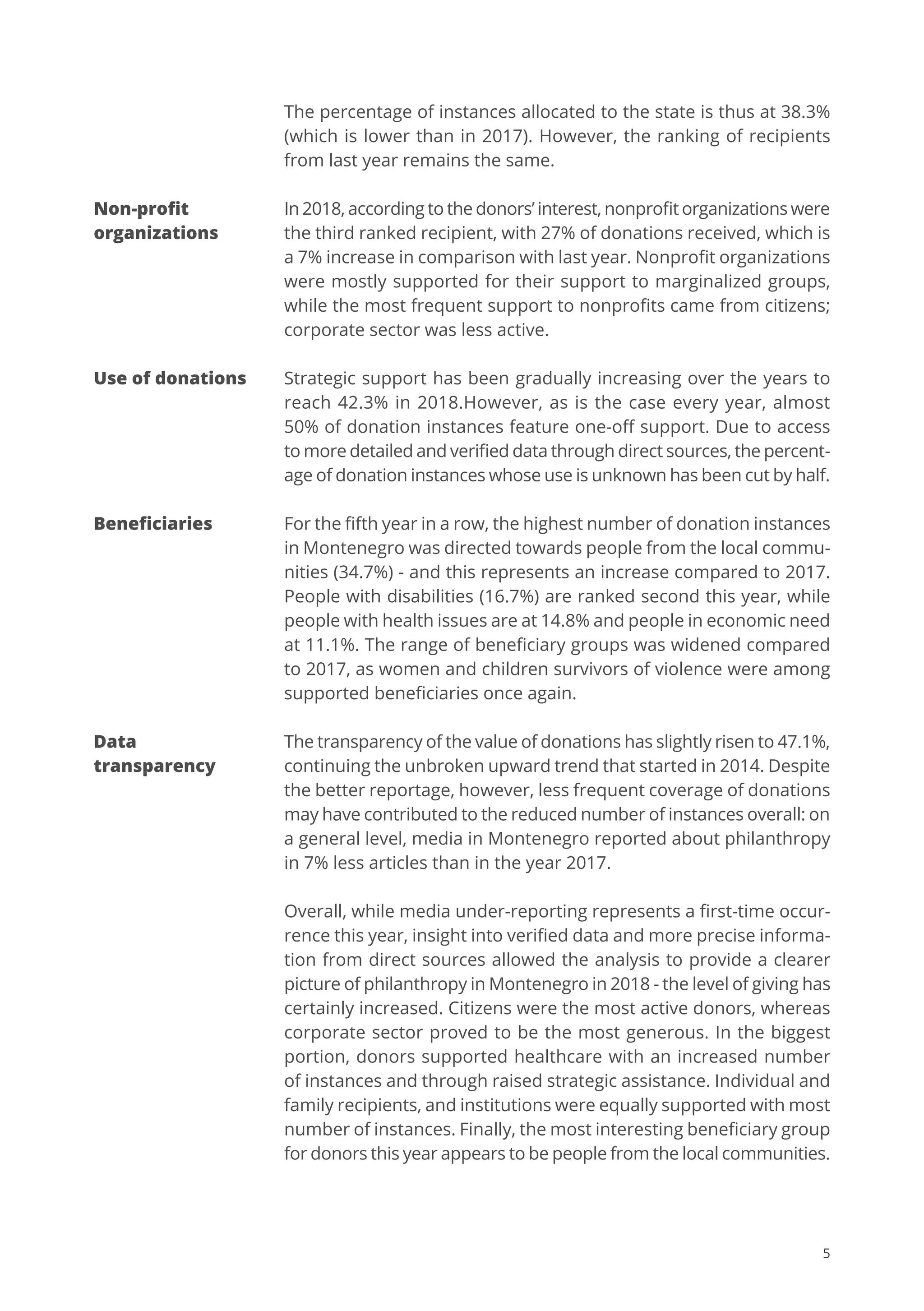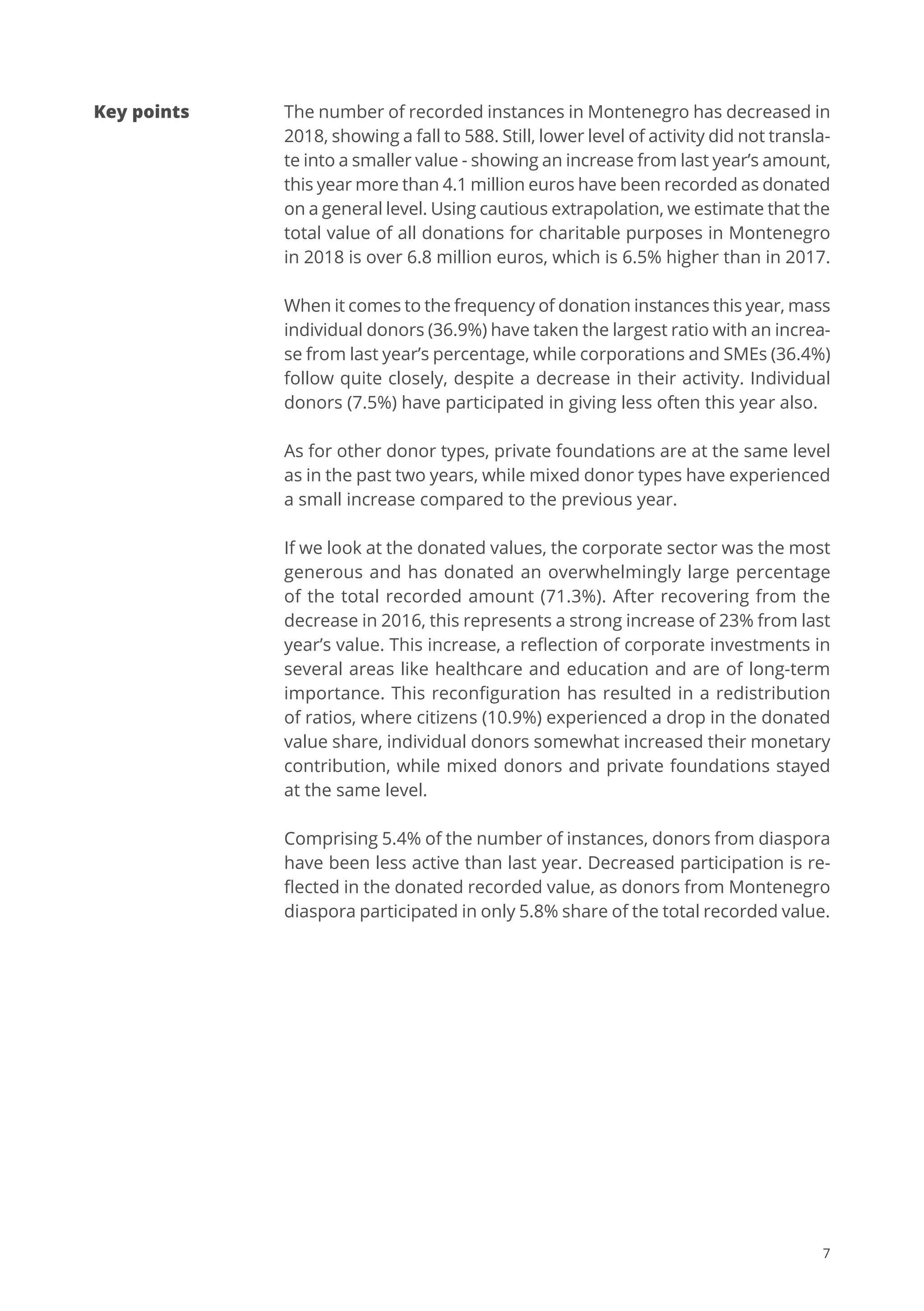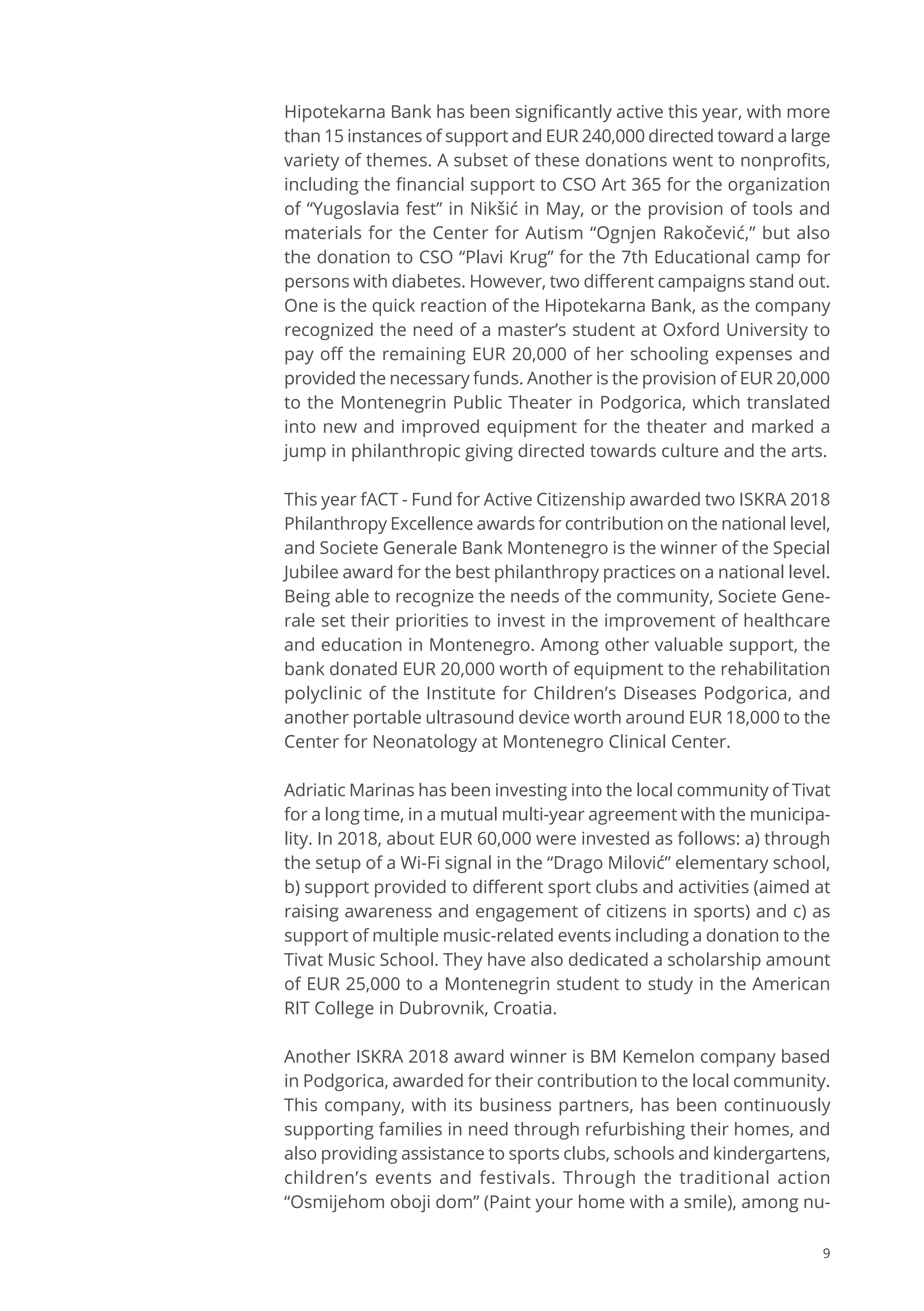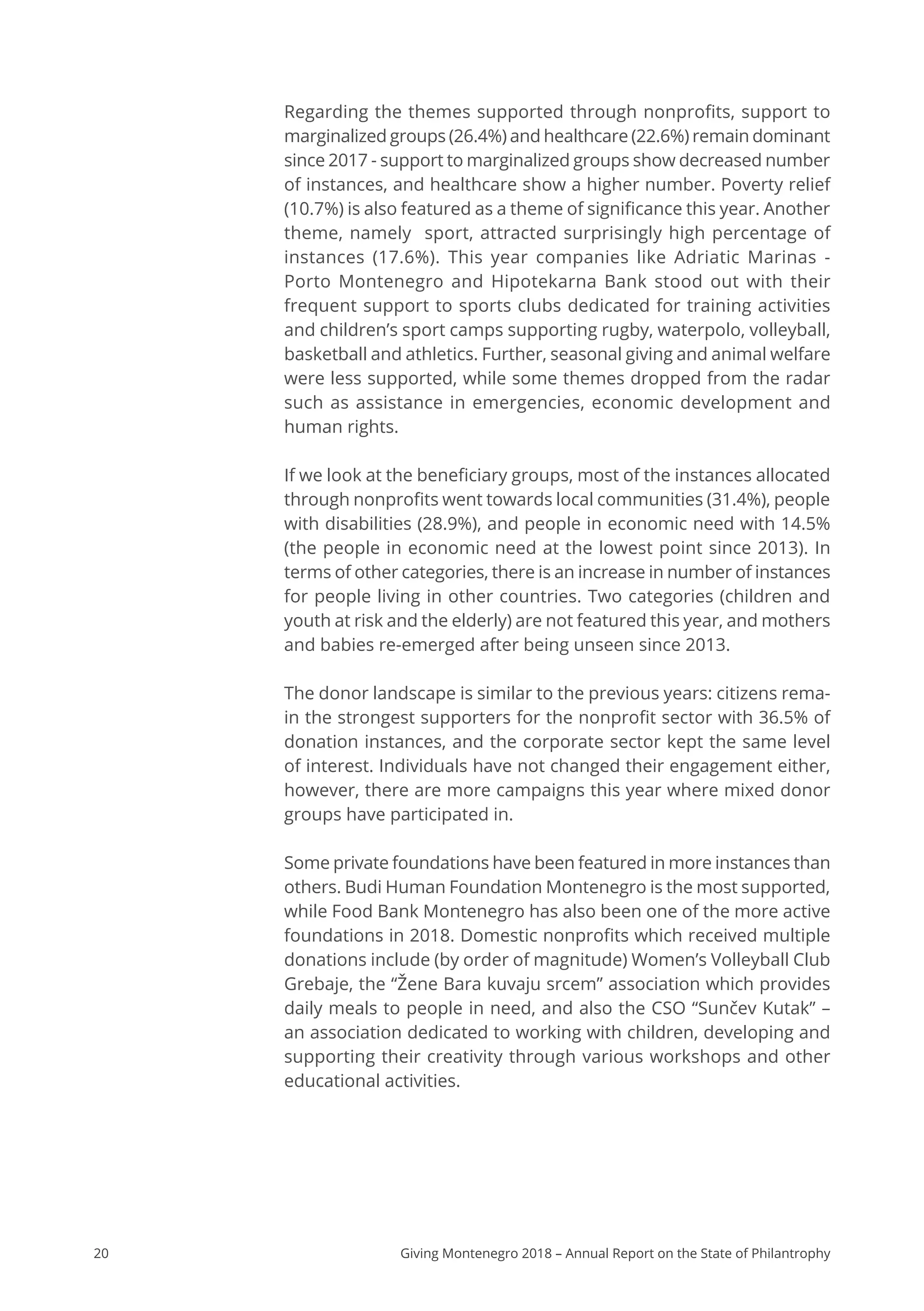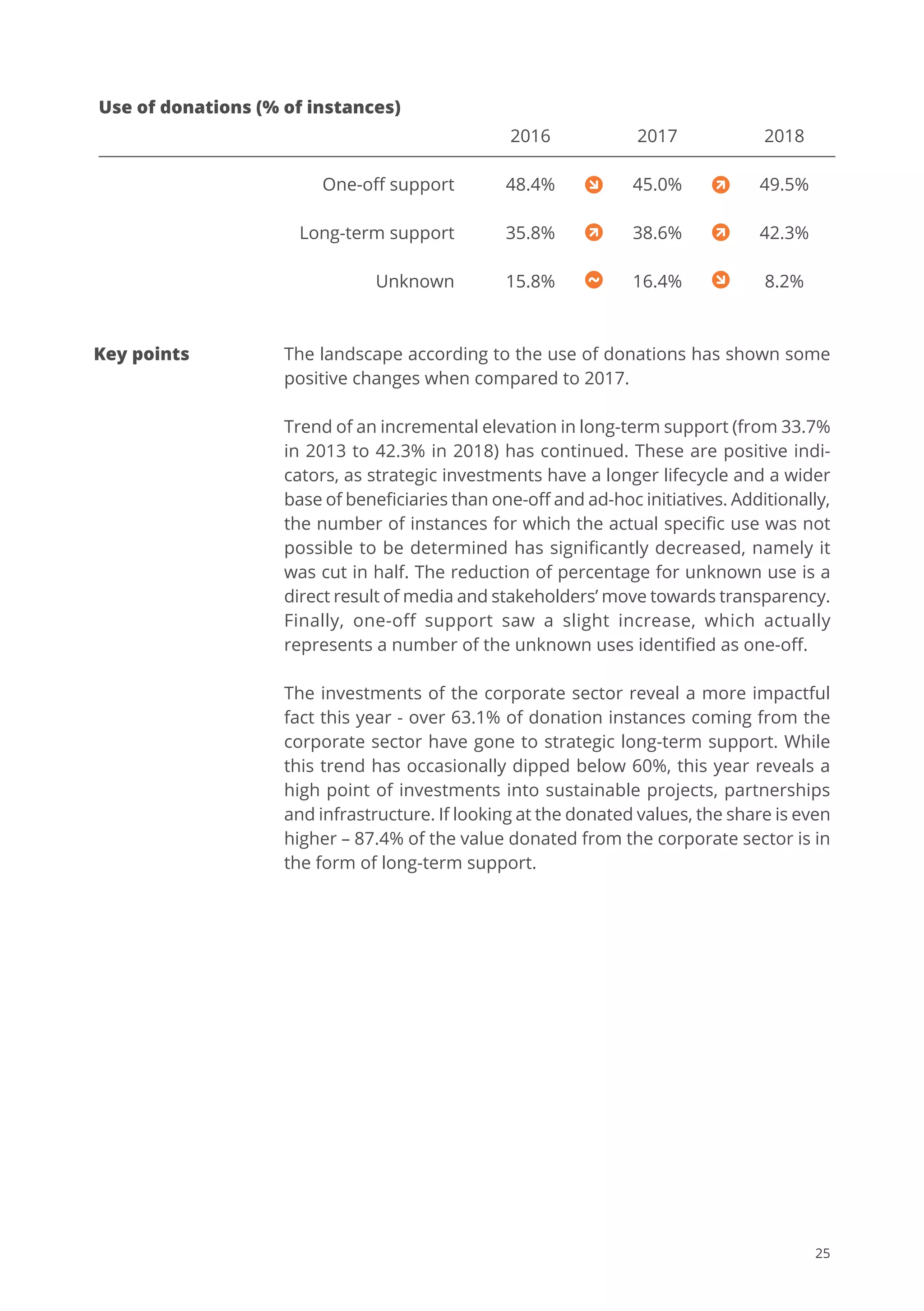In 2018, Montenegro saw a decrease in recorded instances of charitable giving to 588, but the total estimated donations rose by 6.5% to over €6.8 million. Citizens were the most active donors, while the corporate sector contributed a significant 71.3% of the total recorded sum, showing an increase in their monetary support. Healthcare remained the primary area for donations, with increased strategic giving, despite less frequent media coverage of philanthropy compared to previous years.



